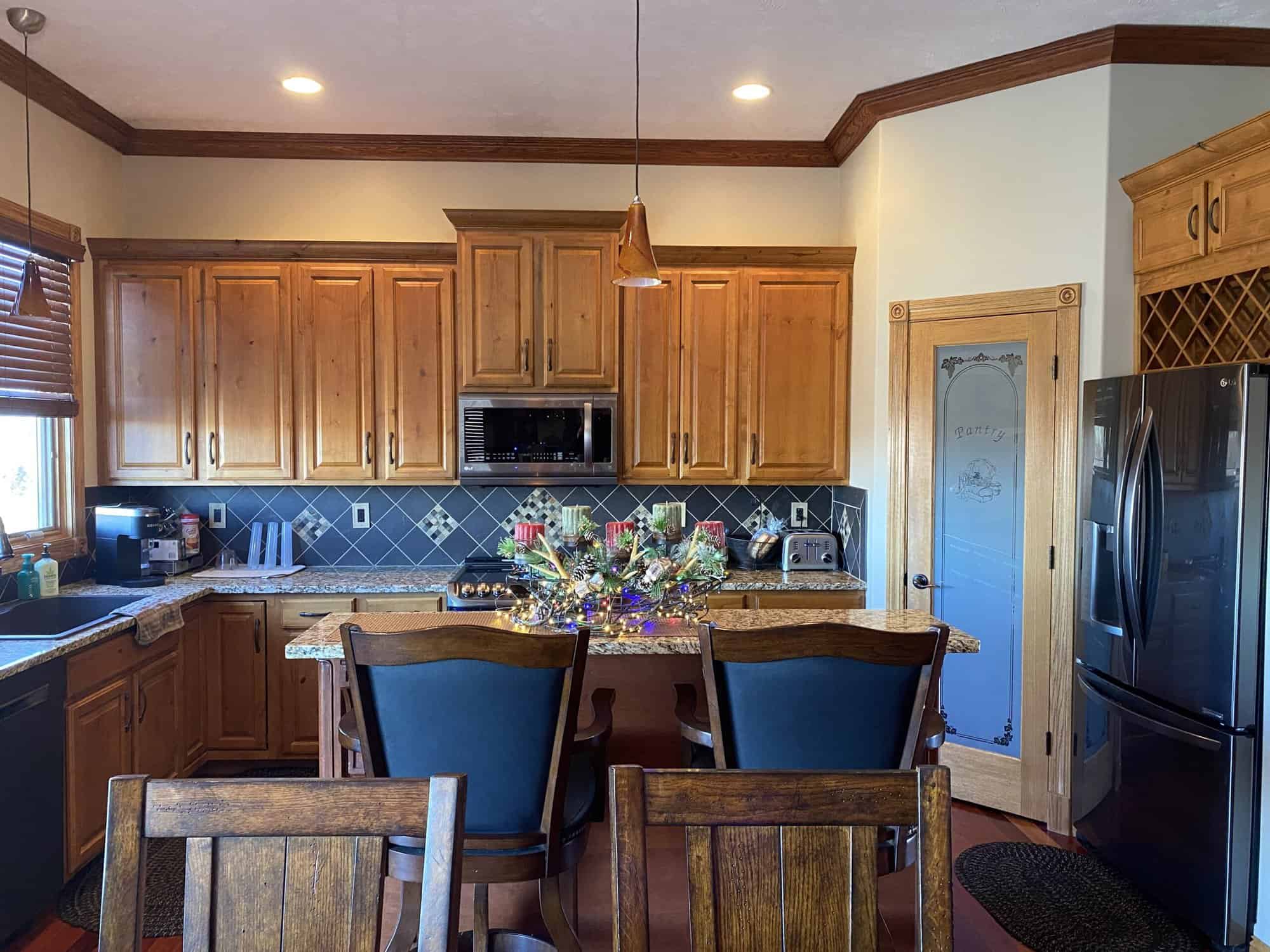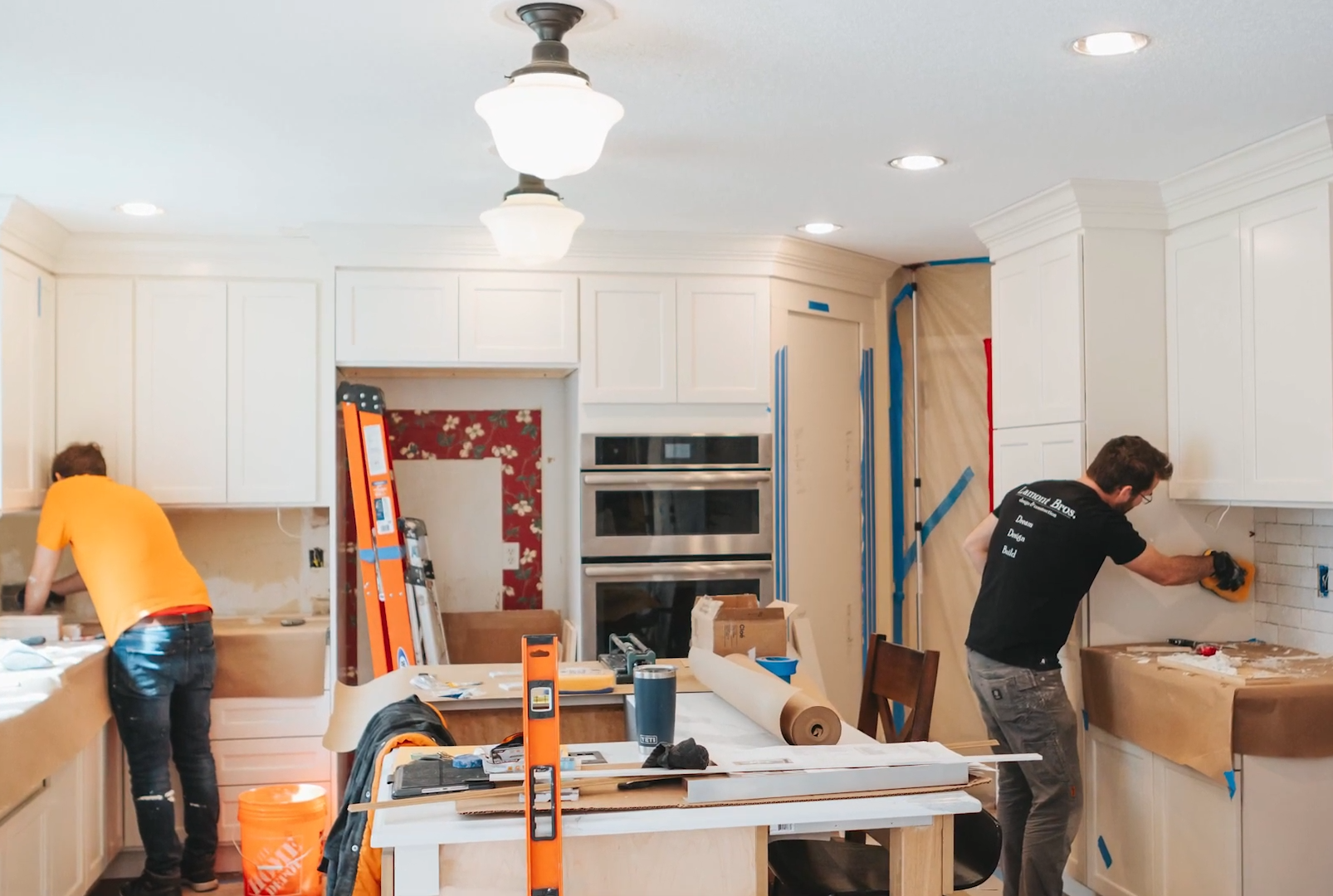Cost Comparison

Choosing between painting and refacing kitchen cabinets involves a significant financial decision. Understanding the cost differences between these two options is crucial for making an informed choice that aligns with your budget and desired aesthetic outcome. This section will detail the average costs associated with each method, highlighting the key factors that contribute to the overall expense.
Cost Breakdown: Painting vs. Refacing
The total cost of either painting or refacing kitchen cabinets depends on several factors, including the number of cabinets, their size and complexity, the quality of materials used, and the labor rates in your region. A detailed breakdown of cost components helps clarify the price differences.
- Painting: The cost of painting typically includes the price of paint (consider high-quality cabinet paint for durability), primer, sandpaper, brushes, rollers, and other painting supplies. Labor costs depend on the size of the kitchen and the level of preparation required. Expect to pay between $3 and $10 per square foot for professional painting, or significantly less if you are doing the work yourself. Additional costs may arise from cabinet disassembly if necessary for thorough painting.
- Refacing: Refacing involves replacing cabinet doors, drawer fronts, and applying new veneer or laminate to the existing cabinet boxes. This option is more expensive than painting due to the cost of new cabinet doors and materials. Labor costs are also higher as the process is more complex and time-consuming. Expect to pay between $10 and $20 per linear foot for professional refacing. This price can vary widely depending on the quality of materials chosen (e.g., solid wood vs. laminate).
Cost Comparison Table
The following table provides a general cost comparison based on average prices. Remember that these are estimates, and actual costs may vary based on location and specific project details.
| Task | Painting Cost | Refacing Cost | Cost Difference |
|---|---|---|---|
| Materials | $100 – $500 | $1000 – $3000 | $900 – $2500 |
| Labor | $500 – $2000 | $2000 – $6000 | $1500 – $4000 |
| Total Estimated Cost | $600 – $2500 | $3000 – $9000 | $2400 – $6500 |
Cost-Effectiveness Scenario: 10 Standard + 2 Large Corner Cabinets
Let’s consider a kitchen with 10 standard cabinets and 2 large corner cabinets. Assuming an average cabinet size and moderate material choices, painting might cost between $800 and $1500, including materials and labor. Refacing the same kitchen, with similar material choices, could cost between $3500 and $6000. This scenario illustrates that painting offers significant cost savings compared to refacing, particularly for a medium-sized kitchen. The substantial cost difference highlights the importance of carefully evaluating the budget and desired outcome before making a decision.
Aesthetic Considerations and Design Options
/kitchen-cabinets-reface-vs-replace-1821042-hero-1691b361cf2f4dffb83913489cb711d0.jpg)
Choosing between painting and refacing kitchen cabinets involves a significant aesthetic decision. Both methods offer a wide range of possibilities, but the final look and feel will differ considerably, impacting the overall style and feel of your kitchen. Understanding these differences is crucial for making an informed choice.
Painting and refacing provide distinct aesthetic pathways to kitchen transformation. Painting allows for a vast spectrum of color and finish options, creating a personalized look relatively inexpensively. Refacing, conversely, offers the potential for more substantial style changes, altering the cabinet’s profile and introducing new materials.
Paint Color and Finish Options
The versatility of paint allows for a nearly limitless array of colors and finishes. From classic white shaker cabinets to bold, saturated hues, the choice is entirely yours. Consider matte finishes for a modern, understated look, semi-gloss for a subtle sheen, or high-gloss for a dramatic, reflective surface. The finish selection significantly impacts the overall visual effect. A matte finish, for instance, can minimize imperfections, while a high-gloss finish accentuates the cabinet’s form and highlights light.
Examples of Kitchen Cabinet Painting Transformations
Painting can dramatically alter the appearance of outdated cabinets. A simple color change can completely revitalize a kitchen’s aesthetic.
Before: Imagine dated oak cabinets, stained a dark, honeyed brown, with brass hardware. The overall look is heavy and traditional.
After: The same cabinets, now painted a crisp, clean white with brushed nickel hardware. The transformation is immediate; the kitchen feels brighter, more spacious, and modern. The dark wood is completely gone, replaced by a light, airy feel.
Before: Consider a kitchen with dated, honey-colored cabinets with raised panel doors. The style is traditional and feels somewhat dated.
After: The same cabinets, painted a soft gray with updated black hardware. The gray paint softens the traditional raised panel doors and the black hardware adds a modern touch. The overall look is now sophisticated and updated, without a complete overhaul.
Refacing Materials and Style Options
Refacing utilizes materials like wood veneers and laminates to create a new cabinet surface. Wood veneers offer a luxurious, natural look, replicating the appearance of solid wood at a lower cost. Laminates provide a more durable, cost-effective option, available in a wide variety of colors, patterns, and textures. This allows for the incorporation of various styles, from traditional to modern.
Examples of Refacing to Change Cabinet Style, Kitchen cabinet painting vs refacing
Refacing offers the opportunity to significantly alter the style of your cabinets. By replacing cabinet doors and drawer fronts, you can easily change the overall aesthetic.
Before: Consider flat-panel cabinets, common in modern kitchens, made from a plain melamine.
After: Refacing these cabinets with raised panel doors in a cherry wood veneer instantly transforms the kitchen’s style into a more traditional or classic look. The addition of antique brass knobs further enhances the change.
Before: Imagine outdated cabinets with simple, slab-style doors.
After: Refacing these cabinets with shaker-style doors in a light oak laminate creates a completely different look, adding a touch of farmhouse charm or transitional style. The choice of hardware—from sleek bar pulls to ornate knobs—can further fine-tune the aesthetic.
Practical Aspects and Longevity: Kitchen Cabinet Painting Vs Refacing

Choosing between painting and refacing kitchen cabinets involves a careful consideration of long-term practicality and the lifespan of each finish. Both options offer aesthetic improvements, but their durability and maintenance requirements differ significantly, impacting their overall longevity and value. Understanding these differences is crucial for making an informed decision that aligns with your budget and lifestyle.
Kitchen cabinet painting vs refacing – The durability and longevity of painted and refaced cabinets are influenced by several factors, including the quality of materials and workmanship, the environment, and the level of care provided. While both methods can significantly enhance the look of your kitchen, the lifespan and maintenance needs vary considerably.
Cabinet Finish Durability Comparison
Painted cabinets, when properly prepared and painted with high-quality, durable paints, can last for many years. However, the finish is susceptible to chipping and scratching, especially in high-traffic areas. The type of paint used plays a crucial role; a high-gloss enamel is generally more durable than a matte finish. Refaced cabinets, on the other hand, utilize a veneer applied over existing cabinet frames. The longevity of the veneer depends on its quality and the application process. While less prone to chipping than paint, it can be susceptible to peeling, particularly around edges and corners, especially with moisture exposure. In general, both painted and refaced cabinets can last for 10-15 years with proper care, but a well-maintained painted finish can potentially last longer.
Drawbacks of Painting and Refacing
Understanding the potential drawbacks of each method helps in making a well-informed decision. Both methods have their limitations that could impact the longevity and aesthetic appeal of your cabinets over time.
| Painting Drawbacks | Refacing Drawbacks |
|---|---|
| Susceptible to chipping and scratching, especially with high-gloss finishes. | Veneer can peel or warp, especially with moisture exposure. |
| Requires thorough surface preparation; otherwise, the paint may not adhere properly. | Limited color and style choices compared to painting. |
| May require repainting after several years, depending on wear and tear. | Can be more expensive than painting, especially for complex cabinet designs. |
| Color may fade over time due to sun exposure. | The underlying cabinet structure remains unchanged, meaning any structural issues will persist. |
Maintenance Requirements
Regular maintenance is essential for prolonging the life of both painted and refaced cabinets. Consistent care will help preserve their appearance and functionality, minimizing the need for costly repairs or replacements.
- Painted Cabinets:
- Clean regularly with a damp cloth and mild detergent. Avoid abrasive cleaners.
- Touch up minor chips and scratches promptly to prevent further damage.
- Consider applying a protective sealant every few years to enhance durability.
- Refaced Cabinets:
- Clean regularly with a damp cloth and mild detergent. Avoid harsh chemicals.
- Avoid excessive moisture exposure to prevent veneer damage.
- Address any peeling or warping immediately to prevent further issues.
